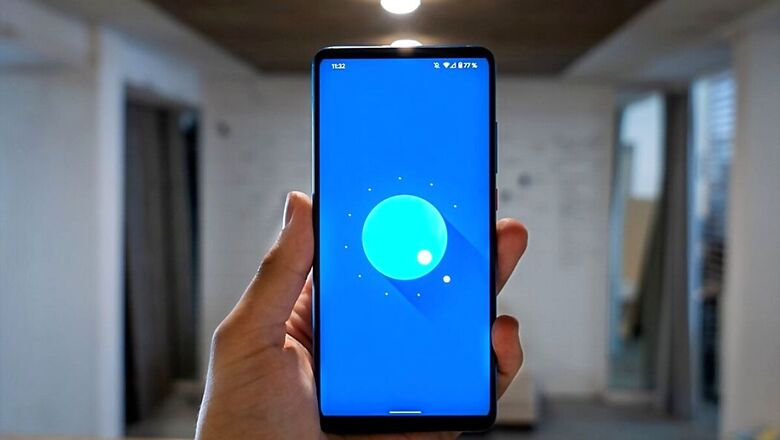
views
When we think of the battle between mobile operating systems (OS) today, we pretty much see two giants – Google’s Android and Apple’s iOS. Although the iOS is only for Apple’s iPhone models, the Android OS on the other hand, is pretty much available to every other phone maker. There are advantages and disadvantages to either approach, and they are dictated by two different schools of thought. According to data by research firm Statista, Android penetration among smartphones in India was at merely 10 percent in 2012 but in 2019, roughly 90 percent handsets in the country run Google’s mobile OS (or least a tweaked version of Android). But Android, as we know today, did not see its inception with Google. You may not have realised this, but it was acquired by the company back in 2005. So, what happened back then and most importantly, how did Google manage to surpass its competitors like BlackBerry OS and SymbianOS that dominated the smartphone OS segment until seven years ago? Let’s take a look at the very origins of Google Android.
Before we get going, for those unaware, mobile OS similar to PC OS (like Windows) is the software that allows smartphones, and other devices to run apps and programs. It is that key element which binds all the skeleton of the device together to provide the best user interface and experience.
THE ANDROID INCEPTION
Back in 2005, Android Inc was founded in Palo Alto, California by Rich Miner, Nick Sears, Chris White, and Andy Rubin. As revealed by Rubin at a summit in 2013, Android was initially meant to improve the software used in digital cameras, but the company later shifted its focus to smartphones. This focus on mobile OS became more concrete when Google acquired the company in 2005 and Rubin with other founding members stayed on board to continue developing the software under their new owners. From the start, Linux was chosen to be the basis for the Android OS, that meant that the software would be offered to third-party mobile phone manufacturers and app developers for free while Google can make money by offering services.
As explained by The Verge’s Dieter Bohn, Android as a platform was initially hoping to rival phones running Microsoft’s Windows Mobile and then Windows Phone (somewhat popular at the time), and the Google had planned on launching the first Android-running phone, just years after the acquisition. Between 2005 and 2007, the company was also experimenting with Android but it wasn’t until September 2008 when it commercially rolled out on the T-Mobile G1 (aka the HTC Dream in other markets), a year after Apple unveiled the iPhone with iOS.
SERVING THE DESSERT – CUPCAKE, ICE CREAM SANDWICH, KITKAT, OREO AND MORE
The first version of Android did not adopt a dessert-themed nickname, but with the launch of Android 1.5 in April 2009, Google revealed its codename as Cupcake. Some of the phones that run Android 1.5 Cupcake out-of-the-box included the first Samsung Galaxy and HTC Hero phones. Fun Fact: The name Android emerged as its co-founder Andy Rubin was fondly called by the same name due to his love for robots. However, specific reasons for naming Android versions after sweet candy and desserts remain unknown till date.
Similarly, the first version of Android carried Google’s own services (as expected) such as Google Maps, YouTube, and an HTML browser (pre-Chrome) and of course, Google Search bar along with Android app store. With each new version of Android – Android 1.6 Donut and Android 2.0-2.1 Eclair – both released in 2009, Google introduced more improvements that let users control Wi-Fi and Bluetooth with a single toggle button, search with a quick search bar, enhanced Gallery, and so on.
By the end of 2010, Google unveiled its first Nexus-brand phone, and subsequently new Android versions such as Android 2.2 Froyo and Android 2.3 Gingerbread that carried features such as notification bar, NFC support, multiple cameras compatibility, and video chat support within Google Talk. The next few iterations of Android 3.0 Honeycomb, Android 4.0 Ice Cream Sandwich, Android 4.1-4.3 Jelly Bean, and Android 4.4 KitKat were released between February 2011 and September 2013. At this point, Android was at the end of its teenhood and carried loads of improvements to the table which include support for large-screen smartphones and tablets, swipe gestures to dismiss notifications, data usage section, and so on. Additionally, Android’s global market share increased from 23 percent in January 2012 to 40 percent by September 2013, as per Statista.
Things changed drastically with the release of Android 5.0 Lollipop in June 2014. Not only it carried a new interface with cleaner icons and paper-like design (thanks to material design guidelines by Google that still exists today), it also revamped the navigation bar and lock screen with notifications. Similarly, Android Lollipop added support for dual-SIM, HD Voice calls, and truly hands-free voice control via the “OK, Google” command. Google’s Nexus 6 smartphone (co-developed by Motorola) was among the first devices to have Lollipop pre-installed.
HOW GOOGLE WORKED ITS FRIENDLY MAGIC WITH ANDROID
Over the years, Google has unveiled some distinct features that have transformed the smartphone market, but the pertinent question remains – how did Android come to eventually dominate a market which was already ruled by BlackBerry OS, Nokia Series 40 OS, and iOS? A broad answer to this question lies at the core of Android, that is, its open-source nature that uses Linux kernel under the hood. It essentially means that Android uses a part of Linux so that developers could modify the kernel (core of mobile OS) to fit their needs and not have to write their own codings. It also means that Android’s open-source nature challenged the closed-system of Blackberry and iOS that required users to buy phones from the same brand to use their services. On the other hand, Android was made available on various hardware whether it was Samsung, Motorola, Nokia or subsequently a growing number of Chinese smartphone makers.
Similarly, Google Android is available on smartphones of different price points. That is a big advantage, particularly in markets such as India, where we have not had subsidies or bundles provided by mobile service providers that may have otherwise reduced the initial outlay. Additionally, the ability to customise and Google’s partnership with numerous OEMs who then rolled out phone after phone are certain contributors for its success.
CHALLENGES FACED BY ANDROID
Google releases a new version of Android with several new features and enhancements each year, but the adoption rate for these updates remains slow among OEMs. For instance, the company has rolled out Android 11; however, brands such as Xiaomi, Samsung and countless others are yet to introduce it on their smartphones while some smartphone makers like OnePlus is slowly releasing the update. All the customisations and additions that phonemakers bolt on to Android on their phones is a reason for this delay, because it takes time to update, optimise and customise these for a new Android version, and that takes time in the test labs before phone users can get to experience the happiness of an OTA update on their phone.
Similarly, there’s also a fragmentation (read variety), that means the interface between devices running Android also differs drastically. For instance, its TV platform called Android TV and now the upcoming Google TV, both differ in terms of the UI on smartphones or tablets. On the other hand, Apple is trying to minimise this gap so that users have access to a unified experience across all platforms, including iOS, iPadOS and macOS.
ANDROID’S TOUGH BATTLE WITH SECURITY
Finally, Android’s massive market share also makes it vulnerable to targeted security attacks. Google Play Store often fails to detect dubious apps that serve no purpose but to target users with malware. But despite all this, Android continues to grow, and Google is ramping up efforts simultaneously to address its challenges. In 2017, the company launched Google Play Protect, a machine learning-powered security service that scans apps available on Google Play Store for malicious behaviour. Google is also improving its AI technologies to detect malware on Gmail and other services to prevent phishing attacks and more.
That being said, Google is yet to improve security on Google Play Store as dubious apps still manage to bypass Google Play Protect scanner by using codes in foreign languages. Similarly, low-quality Android apps are deprived of proper checks from Google authorities before they’re published on its app store.
ANDROID’S FUTURE
Coming to its future, Android smartphones across the world are expected to grow further in the coming years as well. For instance, Indian smartphone maker Micromax recently launched its 1-series smartphone that is boasting a clean Android experience. Another big brand from the country, Reliance Jio, is also partnering with Google to soon launch its first budget Android mobile. Interestingly, Nokia that had its own S40 OS and later moved to Microsoft OS with the Lumia lineup, is also widely adopting Android for its smartphones. Samsung, on the other hand, after experimenting with its Bixby voice assistant is subsequently returning to the Google Assistant to provide AI services via Android-based One UI that runs on numerous Galaxy smartphones.
Read all the Latest News, Breaking News and Coronavirus News here




















Comments
0 comment